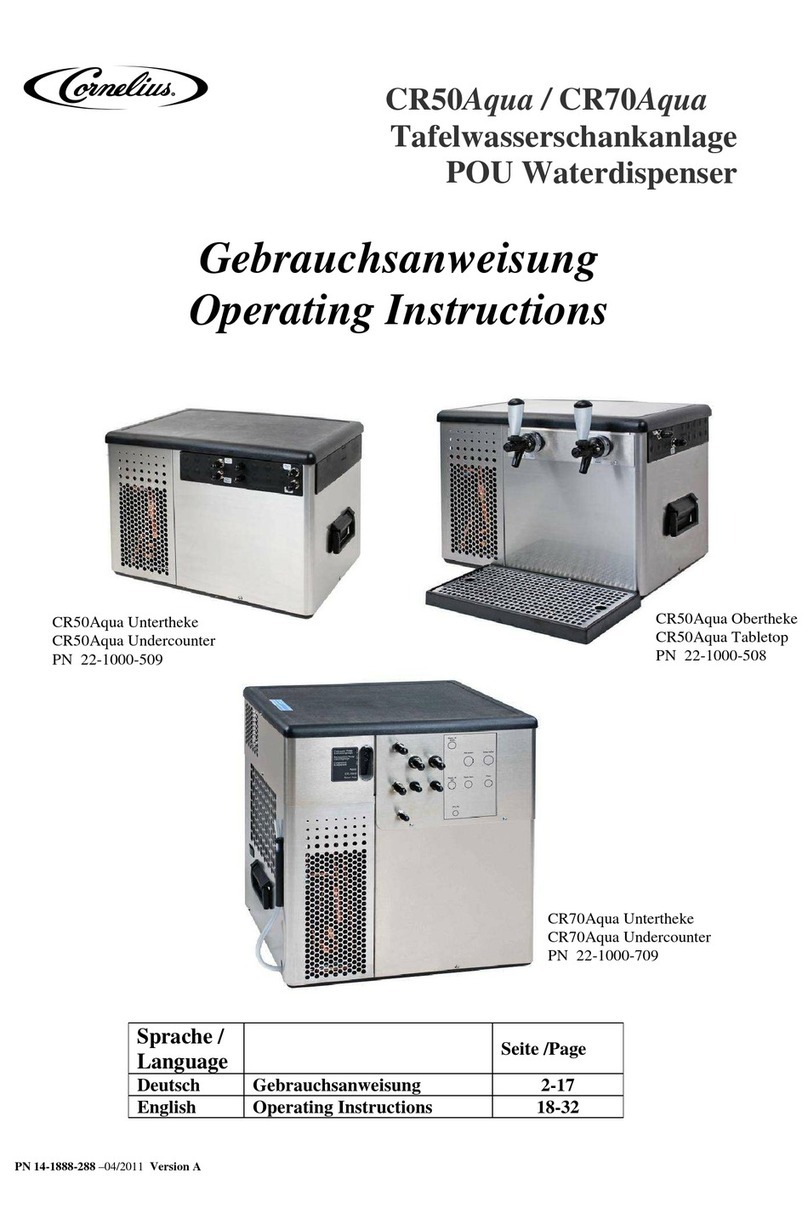Table of Contents / Inhaltsverzeichnis
English...................................................................................................................................................................4
1.1 Safety.....................................................................................................................................................4
General Safety Regulations ..................................................................................................................4
Safety Instructions Electricity ................................................................................................................4
Safety Instructions CO2.........................................................................................................................4
Intended use..........................................................................................................................................5
Improper use .........................................................................................................................................5
Staff .......................................................................................................................................................6
1.2 Transport and packaging.......................................................................................................................7
Storage..................................................................................................................................................7
1.3 Disposal.................................................................................................................................................8
1.4 InstallationRequirements.......................................................................................................................9
Installation Sites.....................................................................................................................................9
Electrical Connections...........................................................................................................................9
1.5 Installation .............................................................................................................................................9
Water Connection..................................................................................................................................9
CO2 Connection ...................................................................................................................................9
Connecting Soda Water and Still Water................................................................................................9
Pump Control.........................................................................................................................................9
1.6 Putting into and out ofService .............................................................................................................10
Putting into Service..............................................................................................................................10
Turning On the Device.........................................................................................................................10
End of Operation .................................................................................................................................11
Daily Inspection ...................................................................................................................................11
Putting out of Service ..........................................................................................................................11
1.7 Instructions forCleaning.......................................................................................................................12
1.8 Problems andTroubleshooting ............................................................................................................13
1.9 Installation CheckList..........................................................................................................................14
Deutsch...............................................................................................................................................................15
2.1 Sicherheit.............................................................................................................................................15
SicherheitshinweiseStrom...................................................................................................................15
2.2 Sicherheitshinweise CO2 ....................................................................................................................15
Bestimmungsgemäße Verwendung ....................................................................................................16
Nicht bestimmungsgemäße Verwendung ...........................................................................................16
Personal ..............................................................................................................................................17
2.3 Entsorgung ..........................................................................................................................................17
2.4 Anforderungen an denAufstellort.........................................................................................................18
Aufstellräume.......................................................................................................................................18
Elektrische Anschlüsse........................................................................................................................18
2.5 Installation ...........................................................................................................................................18
Wasseranschluß..................................................................................................................................18
CO2-Anschluß (nur Karbonator) .........................................................................................................18
Anschluß von Sodawasser undStillwasser.........................................................................................18
Pumpensteuerung ...............................................................................................................................18
2.6 In- und Außerbetriebnahme ................................................................................................................20
Inbetriebnahme....................................................................................................................................20
Nur bei Karbonatoren:.........................................................................................................................20
Einschalten des Gerätes......................................................................................................................20
Betriebsende .......................................................................................................................................21
TäglicheKontrolle................................................................................................................................21
Außerbetriebnahme.............................................................................................................................21
2.7 Reinigung ............................................................................................................................................21
2.8 StörungenundderenBehebung...........................................................................................................22
2.9 Installationscheckliste..........................................................................................................................23
Technische Daten und Darstellung / Technical data anddiagrams.......................................................................24
3.1 Fließschema / Flow scheme................................................................................................................25
3.2 Stromlaufplan / Circuit diagram...........................................................................................................25




























